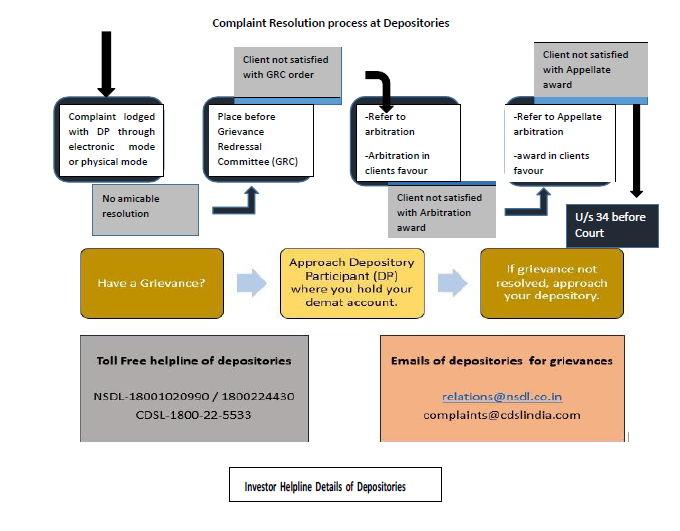KYC is a one-time exercise while dealing in securities markets. Once KYC is done through a SEBI registered intermediary (broker, DP, Mutual Fund, etc.), you do not need to undergo the same process again when approaching another intermediary.
In case of any change in KYC details, please submit a change request form along with the supporting documents.
As per the latest SEBI circular SEBI/HO/MIRSD/FATF/P/CIR/2023/0144 dated August 11, 2023, KYC Registration Agencies (KRA) are responsible for validating clients' KYC details as per their records.
As per SEBI guidelines, it is mandatory to verify your KYC details such as email ID and mobile number registered with the KRA (KYC Registration Agency).
This is required when your KYC details are incorrect in the KRA portal. You need to furnish the following documents via email at fes@fesecurities.in. We will update your KRA details.
Once we receive the above documents, we shall update our records.
After processing your request, we will inform KRA to update their records. Once updated, you will receive an SMS to your registered mobile number and an email to your registered email ID for validation. Check your spam, trash, or deleted folder if you do not find the email.
Follow these steps to check with which KRA your KYC is registered:
The KRA can be one of the following:
Once you identify your KRA, visit their respective website and follow the instructions to verify your email ID and mobile number.
Update your email ID and mobile number. Once updated, follow the below procedure:
When KRA updates your details, you will receive an email and SMS for validation. Your task is complete once you validate your email ID and mobile number.
After validation, the process takes 5-7 working days to update your records and activate your trading account (if deactivated).

Transaction alerts through SMS, e-locker facilities, chatbots for instantaneously responding to investor queries etc. have also been developed..
Account opening through digital mode, popularly known as “On-line Account opening”, wherein investor intending to open the demat account can visit DP website, fill in the required information, submit the required documents, conduct video IPV and demat account gets opened without visiting DPs office.
In case of transposition-cum-dematerialisation, client can get securities dematerialised in the same account if the names appearing on the certificates match with the names in which the account has been opened but are in a different order. The same may be done by submitting the security certificates along with the Transposition Form and Demat Request Form.
Internet-enabled services like Speed-e (NSDL) & Easiest (CDSL) empower a demat account holder in managing his/her securities ‘anytime-anywhere’ in an efficient and convenient manner and submit instructions online without the need to use paper. These facilities allows Beneficial Owner (BO) to submit transfer instructions and pledge instructions including margin pledge from their demat account. The instruction facilities are also available on mobile applications through android, windows and IOS platforms.
Investors can give instructions for transfer of securities through e-DIS apart from physical DIS. Here, for on-market transfer of securities, investors need to provide settlement number along with the ISIN and quantity of securities being authorized for transfer. Client shall be required to authorize each e-DIS valid for a single settlement number / settlement date, by way of OTP and PIN/password, both generated at Depositories end. Necessary risk containment measures are being adopted by Depositories in this regard.
Consolidated Account Statements are available online and could also be accessed through mobile app to facilitate the investors to view their holdings in demat form.
For actual delivery of securities to the clearing system from the selling brokers and delivery of securities from the clearing system to the buying broker.
The facility of BSDA with limited services for eligible individuals was introduced with the objective of achieving wider financial inclusion and to encourage holding of demat accounts. No Annual Maintenance Charges (AMC) shall be levied, if the value of securities holding is upto Rs. 50,000. For value of holdings between Rs 50,001- 2,00,000, AMC not exceeding Rs 100 is chargeable. In case of debt securities, there are no AMC charges for holding value upto Rs 1,00,000 and a maximum of Rs 100 as AMC is chargeable for value of holdings between Rs 1,00,001 and Rs 2,00,000.